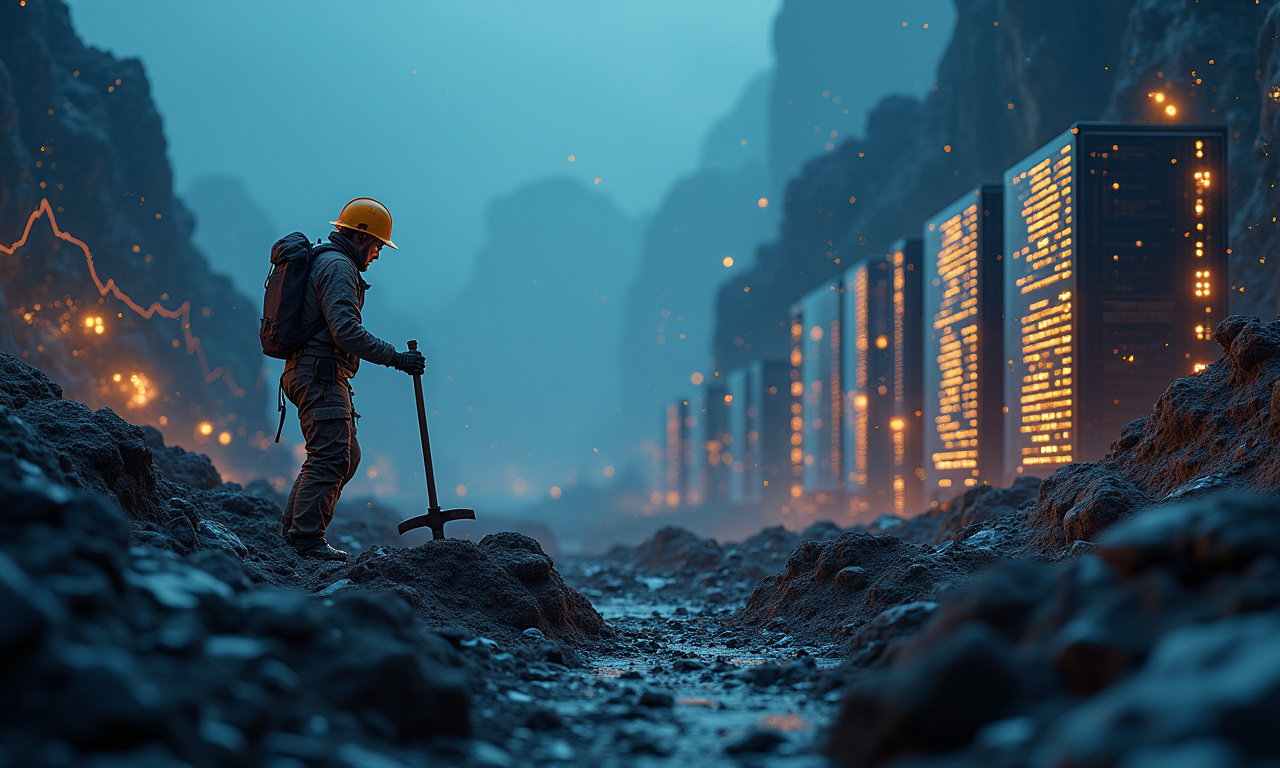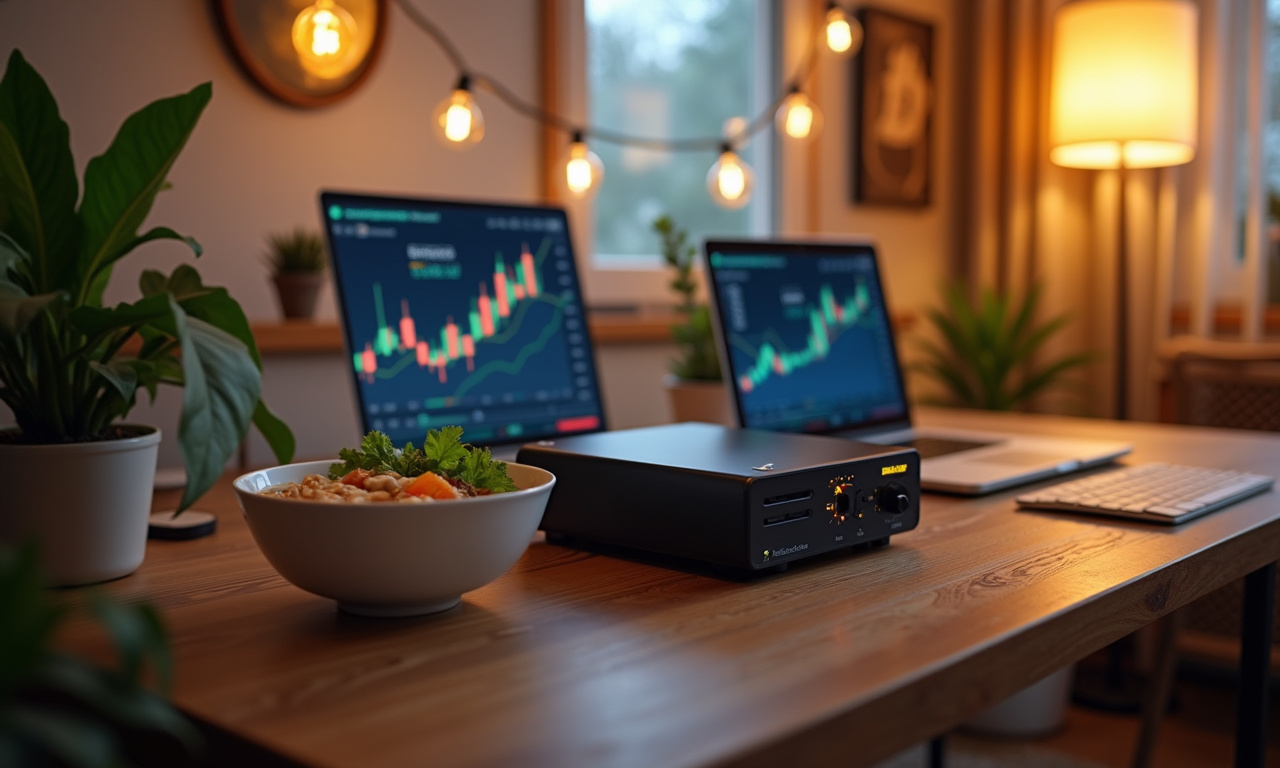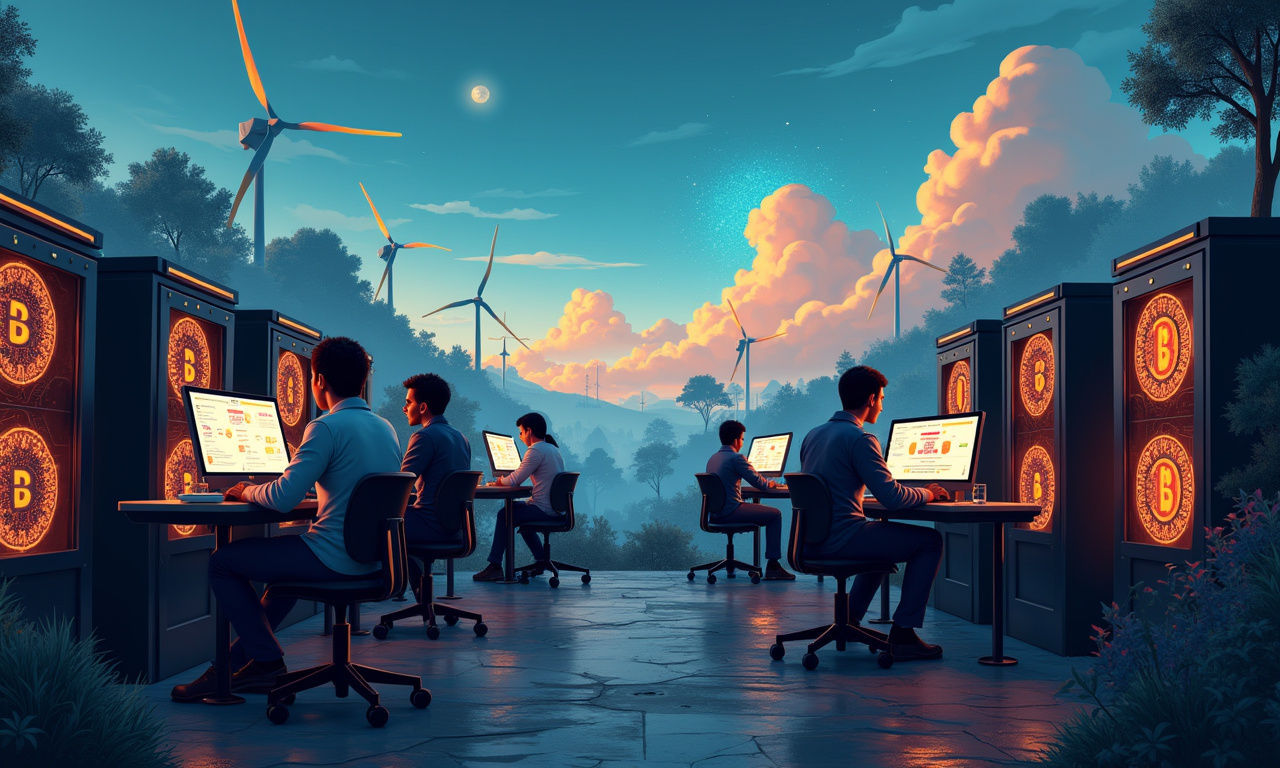Bitcoin Miners' AI Gamble: Smart Move or Risky Diversification?

It’s the long decimal point that continues to frighten crypto CEOs in their sleep. The threat of scarcity, of course, but wow, that immediate penny revenue drop HURTS. Well, what do you do when your main business model gets a 50% haircut every four years? You pivot. And the plan that has everyone buzzing in the Bitcoin mining world? Artificial Intelligence. But is this a stroke of genius, or a truly desperate Hail Mary?
Is AI a Golden Goose for Miners?
Let's be clear: deploying a few GPUs and calling yourself an "AI company" doesn't cut it. The AI landscape is brutal. It’s not the Wild West of 2017 crypto ICOs. We’re not just speaking about competing with a few tech behemoths, long-established AI research labs, and venture-backed AI startups. That reality check is crucial.
Core Scientific's story is instructive. Bankruptcy, followed by an AI colocation pivot, followed by a sale to CoreWeave. Suddenly, the stock is looking healthier. It's a compelling narrative, isn't it? Let’s not confuse a well-earned comeback story with a surefire playbook for copycat success. This is to say that Core Scientific’s success isn’t really just a story about plugging in some GPUs. It can be all about where you are located, what existing infrastructure you have and, frankly, some luck. Can everyone replicate that? Doubtful.
Hut 8’s Highrise AI, Iren and Hive are all jumping in with both feet, as well. They’re going to sell GPU-as-a-Service, they’re going to build these data centers, and they’re aiming at this much AI revenue. Good for them. Seriously. Here's the question that keeps me up at night: are they becoming masters of two trades, or jacks of all? Focus is critical, particularly when you’re attempting to steer a post-halving world and an AI revolution at the same time.
Can They Afford This AI Experiment?
The elephant in the room is capital. AI infrastructure isn't cheap. We are no longer discussing consumer-grade GeForce graphics cards, but enterprise-level Nvidia H100 GPUs, specialized cooling systems, and gigantic data centers. This isn’t just a matter of procuring a few additional ASICs. This is a different ball game.
Both Riot Platforms and MARA Holdings are custodians of large Bitcoin treasuries. That gives them breathing room. They can experiment with AI opportunities without the same short-term pressure to produce revenue to pay the electric bill right away. They’re the professional poker players at the table, doing the math on the odds before risking all their chips on one hand.
What about the smaller players? The ones that are just getting by with razor-thin margins post-halving? For them, this AI pivot is a high stakes gamble with truly existential consequences. Ultimately, though, they’re putting all their eggs in one basket on a technology that they don’t really understand. It's a high-stakes game of chicken, and someone's going to swerve.
And don’t underestimate the regulatory cloud that’s hanging over AI. The rules are still being written. What if governments pursue overly burdensome regulation in the development or deployment of AI? What happens if stricter environmental regulations render these energy-intensive AI operations unsustainable? These are the unknown unknowns that will sink even the best-laid plans.
Mining Brains, Not Just Bitcoin Anymore?
Here's where things get interesting. There's an unexpected connection between Bitcoin mining and AI that most people miss: mathematical expertise. Building and running a successful Bitcoin mining operation means having an intimate understanding of highly complex algorithms, cryptography, and distributed systems, to start. Those would be the very same skills that are in high demand on the AI side.
Miners are not simply plugging in machines and rolling the dice. They’re keeping an eye on power usage, grappling with mammoth network size, and iterating on their algorithms every day to create the most efficient route. That, combined with their technical know-how, will give them a competitive edge in specialized AI niches. This flexibility is particularly priceless in fields that require custom-made hardware or experience.
Think about it: MARA is developing immersion cooling systems for dense compute, including AI. Which isn’t just concerning Bitcoin mining — it’s about taking HPC to the next level. And at Riot, the company is actively considering repurposing a large chunk of its datacenter footprint to support AI workloads. They're not just thinking about survival; they're thinking about innovation.
And finally there’s the fatalistic, contrarian approach of Canaan, the ASIC manufacturer. They’re re-committing to Bitcoin mining hardware and closing their AI chip subsidiary. That's a bold move. It’s a wager that Bitcoin mining is here to stay, and that the AI boom market is overhyped, crowded, and not as profitable as it seems. That takes guts.
Ultimately, the success of this AI gamble will depend on a few key factors: expertise, capital, and timing. In order to compete, bitcoin miners will need to develop or obtain key AI know-how. They must obtain sufficient funding for their infrastructure and time their market entry to the nanosecond. That's a tall order.
Having witnessed the economic devastation of the previous halving, the entire Bitcoin mining community is operating under a sense of urgency and anxiety. The pressure to find those alternative revenue streams is very real. Desperation is a dangerous motivator. So put aside the fear of being irrelevant.
Considering these factors, this AI pivot seems like a savvy maneuver for Bitcoin miners. It could be a way to diversify their revenue streams, leverage their existing infrastructure, and tap into a rapidly growing market. It's a risky diversification. It’s a bet worth making, but one that demands thoughtful design, serious commitment of capital, and no small amount of fortune favoring the bold.
So is this truly a genius masterstroke or a dangerous diversification? The answer, as always, is it depends. One thing is certain: the next few years will be fascinating to watch.

Tran Quoc Duy
Blockchain Editor
Tran Quoc Duy offers centrist, well-grounded blockchain analysis, focusing on practical risks and utility in cryptocurrency domains. His analytical depth and subtle humor bring a thoughtful, measured voice to staking and mining topics. In his spare time, he enjoys landscape painting and classic science fiction novels.


